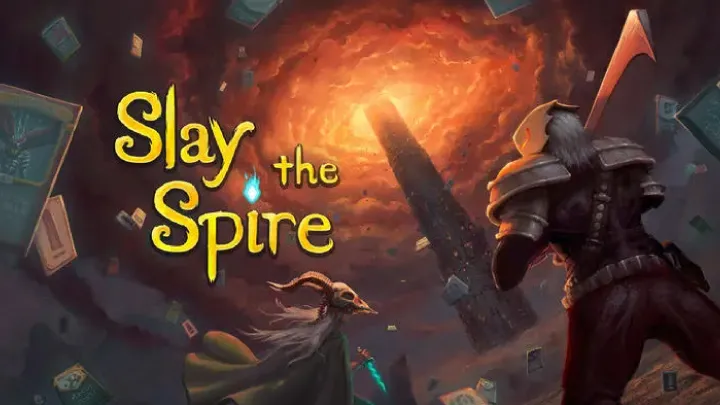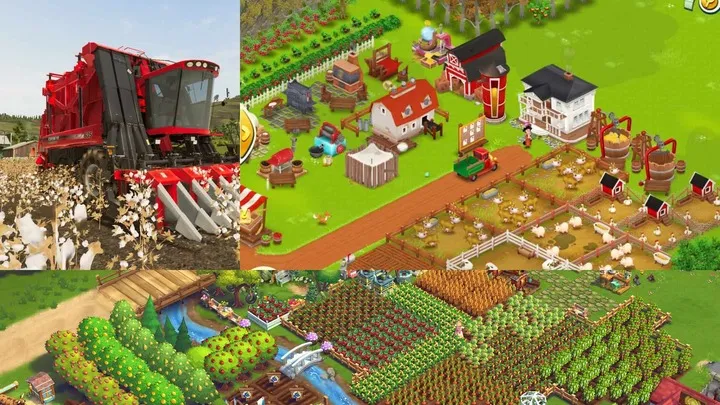
Slay the Spire, developed by MegaCrit and released in 2019, has emerged as a standout title in the roguelike deck-building genre. Its unique blend of strategic decision-making and randomization has garnered a dedicated player base. One of the most compelling aspects of Slay the Spire is the synergy of deck building, where players must carefully curate their card selections to create powerful combinations that can lead them to victory. This article delves deeply into the intricacies of deck building in Slay the Spire, examining the mechanics, strategies, and the impact of synergy on gameplay.
The Foundation of Deck Building
Understanding the Basics
At its core, Slay the Spire revolves around building a deck of cards representing a player's actions during battles. Players choose from a variety of cards, each with unique effects, to create a strategy that suits their playstyle.
Card Types and Mechanics
The game features several types of cards, each serving different functions. Understanding these types is essential for crafting a cohesive deck.
- Attack Cards: These cards deal damage to enemies and are often the backbone of a player's offensive strategy.
- Skill Cards: Skills provide defensive maneuvers, buffs, or utility effects that can enhance a player's overall strategy.
- Power Cards: Powers offer ongoing effects that can significantly alter gameplay dynamics, often providing long-term benefits.
The Importance of Synergy
The concept of synergy is central to successful deck building in Slay the Spire. Players must identify and combine cards that complement each other, creating powerful interactions that can lead to victory.
- Creating Combos: Synergistic combinations can lead to devastating combos that decimate enemies or provide robust defenses.
- Strategic Focus: Building a deck with a specific synergy in mind allows players to streamline their strategies, increasing their chances of success.
The Role of Characters in Deck Building
Unique Playstyles
Slay the Spire features several characters, each with unique mechanics and card pools that influence deck building. Understanding a character's strengths and weaknesses is crucial for developing an effective strategy.
Character Overviews
- The Ironclad: A powerhouse focused on strength and survivability, with cards that emphasize damage and self-healing.
- The Silent: A nimble character specializing in poison and shiv mechanics, offering a range of stealthy and damage-over-time strategies.
- The Defect: A robot that utilizes orbs to deal damage and defend, introducing a unique mechanic that revolves around managing energy and orb interactions.
- The Watcher: A newer character that leverages stances and a mix of offensive and defensive strategies, providing a fresh approach to deck building.
Tailoring Strategies to Characters
Each character's unique abilities and card pools necessitate tailored strategies. Players must adapt their deck-building approach based on the character they choose.
- Ironclad Strategies: Focus on scaling damage through strength and utilizing cards that provide sustainability.
- Silent Strategies: Emphasize poison and shiv mechanics, creating a deck that can deal damage over time while maintaining agility.
- Defect Strategies: Build around orb management and energy generation, ensuring a balance between offense and defense.
The Art of Card Selection
The Drafting Phase
Throughout a run, players encounter opportunities to draft new cards. Each choice impacts the overall synergy and effectiveness of the deck.
Evaluating Card Choices
When selecting cards, players must consider how each card fits into their existing deck and overall strategy. Evaluating cards involves assessing their potential contributions to synergy and effectiveness.
- Assessing Damage: How does the card contribute to overall damage output? Does it synergize with other cards?
- Evaluating Utility: Does the card provide defensive options or utility that complements the player's strategy?
- Long-term Impact: Consider how the card will perform in later stages of the game, particularly against tougher enemies and bosses.
Common Pitfalls
Players may fall into common traps when selecting cards, leading to diluted strategies and ineffective decks.
- Overloading on Attack Cards: While damage is essential, neglecting defensive options can lead to swift defeats.
- Ignoring Synergy: Choosing cards that do not synergize can create a disjointed deck that lacks focus and effectiveness.
The Power of Relics
Understanding Relics
Relics are powerful items that provide passive bonuses and can significantly influence gameplay. They add another layer of strategy to deck building, affecting card choices and overall gameplay.
Types of Relics
Relics can enhance various aspects of gameplay, from generating additional energy to providing unique effects during battles. Understanding the types of relics is crucial for optimizing strategies.
- Energy Relics: Items like "Coffee Dripper" or "The Ring of the Serpent" can enhance energy generation, impacting card play strategies.
- Defensive Relics: Relics such as "Cultist's Mask" or "Bottled Flame" can bolster defensive capabilities, allowing for more aggressive strategies.
- Synergistic Relics: Some relics specifically enhance synergies, such as "Shuriken," which rewards players for playing multiple attacks.
Integrating Relics into Deck Strategies
Choosing relics that complement a player's deck can elevate their strategy to new heights. Players must consider not only their current deck but also how relics will influence their playstyle.
- Relic Synergy: Some relics work exceptionally well with specific card synergies, enhancing their effectiveness.
- Strategic Adaptation: Players may need to adapt their strategies based on the relics they acquire, leading to exciting and dynamic gameplay experiences.
The Impact of Enemies and Encounters
Diverse Enemy Types
Slay the Spire features a variety of enemies, each with unique mechanics and attack patterns. Understanding these enemies is crucial for effective deck building and strategy.
Tailoring Strategies to Enemies
Players must adapt their deck strategies based on the types of enemies they encounter. Some enemies may require specific tactics to defeat effectively.
- High-Damage Enemies: Decks focused on survivability and defense become essential when facing high-damage foes, necessitating cards that mitigate damage.
- Status Effect Enemies: Enemies that apply debuffs or status effects require players to consider cards that counteract these threats, emphasizing adaptability.
Boss Encounters
Bosses in Slay the Spire present unique challenges that require tailored strategies. Understanding a boss's mechanics is crucial for success in these encounters.
- Preparation: Players must prepare their decks to counter the specific abilities of bosses, ensuring they have the right tools for the job.
- Synergy in Action: Boss encounters often highlight the strengths of synergistic deck strategies, as players must execute their plans effectively under pressure.
The Role of Strategy in Deck Building
Long-term Planning
Successful deck building in Slay the Spire requires long-term planning. Players must anticipate future encounters and adapt their strategies accordingly.
Balancing Offense and Defense
A well-rounded deck balances offensive capabilities with defensive options. Players must ensure they can deal damage while also protecting themselves from potential threats.
- Dynamic Adaptation: Players may need to adjust their strategies based on evolving threats and encounters throughout their run.
- Resource Management: Managing resources, such as health and energy, is crucial for sustaining a successful run.
The Importance of Flexibility
Deck building in Slay the Spire is not a one-size-fits-all approach. Players must remain flexible, adapting their strategies based on the cards they acquire and the challenges they face.
- Responding to Changes: The ability to pivot and adjust strategies based on new cards, relics, and encounters is essential for success.
- Embracing Uncertainty: The roguelike nature of the game means that players must embrace uncertainty, leading to unique experiences with each playthrough.
Learning from Failure
The Nature of Roguelikes
Slay the Spire's roguelike design means that players will inevitably encounter failure. Learning from these failures is a crucial part of the experience.
Analyzing Defeats
Players must analyze their defeats to understand what went wrong and how they can improve in future runs. This reflective process is essential for growth and mastery.
- Identifying Weaknesses: Understanding the weaknesses in deck strategies can inform future choices and adjustments.
- Adjusting Playstyles: Players may need to adjust their playstyles based on the lessons learned from defeats, leading to improved decision-making.
Embracing Iteration
The iterative nature of deck building in Slay the Spire allows players to continually refine their strategies. Each run serves as an opportunity for growth and experimentation.
- Experimentation: Players should embrace experimentation with different card combinations and strategies, leading to unique and rewarding experiences.
- Building Resilience: The ability to learn from setbacks fosters resilience, encouraging players to approach challenges with renewed determination.
The Community and Meta Dynamics
Engaging with the Community
Slay the Spire has cultivated a vibrant community of players who share strategies, tips, and deck-building insights. Engaging with this community enhances the overall experience.
Sharing Strategies
Players often share their successful deck builds and strategies, fostering collaboration and learning. This exchange of knowledge can lead to improved gameplay and deeper understanding.
- Online Platforms: Forums, social media, and streaming platforms provide avenues for players to connect and share insights.
- Meta Evolution: As players discover new strategies and combinations, the meta evolves, influencing how others approach the game.
Competitive Play
The game's strategic depth has led to the rise of competitive play, with players seeking to optimize their strategies and achieve high scores. This competitive aspect adds another layer of engagement.
- Leaderboards and Challenges: Competing for high scores on leaderboards encourages players to refine their strategies and adapt their deck-building choices.
- Community Events: Community challenges and events provide opportunities for players to engage in friendly competition, fostering a sense of camaraderie.
Conclusion
The synergy of deck building in Slay the Spire is a captivating aspect that draws players into its strategic depths. The interplay of character mechanics, card selection, relics, and enemy encounters creates a rich tapestry of choices and consequences. As players navigate the challenges of the spire, they must embrace the complexities of deck synergy, learning from failures and adapting their strategies to achieve success. The vibrant community surrounding Slay the Spire enhances the experience, providing a platform for shared knowledge and competitive play. Ultimately, the game's emphasis on strategic decision-making and player agency ensures its lasting appeal in the realm of roguelike deck-building games.

















